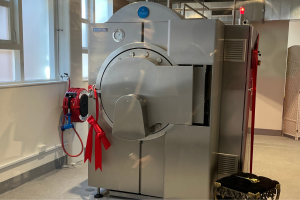
By Kineta Knight Booker
Christchurch Water Crematorium is the result of a partnership between one of the country’s oldest and most respected funeral service providers, Bell, Lamb and Trotter, and one of the newest innovators in New Zealand, Water Cremation Aotearoa.
Opening today (Friday 6th June) at the central city location, water cremation will now be a choice alongside the already well-established options of flame cremation and burial.
Also called Alkaline Hydrolysis or resomation, water cremation is a nature-based solution that co-director of Christchurch Water Crematorium, Deborah Richards, said is environmentally friendly.
“No carbon is emitted during the water cremation process which leaves a sterile liquid with no DNA in at all. That is then returned to the water cycle. Anything not of the body – such as pacemakers and implants remain behind, clean and intact, and can be recycled. The bones that remain after the process is complete can be returned to the family as bones or white ash, it is their choice,” said Richards.
It is estimated that one traditional flame cremation produces an average of 242kgs of carbon dioxide which is roughly the same as driving an average, petrol car from Christchurch to Cape Reinga at the top of the North Island.
Bell, Lamb and Trotter managing director and Christchurch Water Crematorium co-director Andrew Bell, said with around 80 percent of Bell, Lamb and Trotter’s clients choosing cremation over burial, he believed water cremation will have wide appeal.
“We know there’s a demand for environmentally friendly options so it’s very pleasing to be able to offer this,” Bell said.
“For an industry that doesn’t change a great deal, this is a significant development,” he said.
“Bell, Lamb and Trotter was the first company in the country to introduce embalming in 1896 and then flame cremation became available in 1909 which is probably the last time something so noteworthy has happened in the funeral services sector.”
Richards acknowledges that she and Bell knew that being “first cab off the rank” with water cremation, would make implementation challenging.
“With challenges come opportunities. After working on this for more than seven years, we are thrilled to be able to offer water cremation as a far more environmentally sustainable end-of-life choice,” she said.
